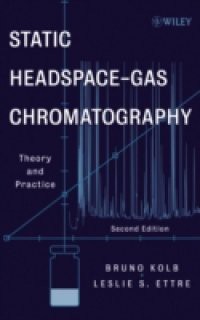The only reference to provide both current and thorough coverage of this important analytical technique Static headspace-gas chromatography (HS-GC) is an indispensable technique for analyzing volatile organic compounds, enabling the analyst to assay a variety of sample matrices while avoiding the costly and time-consuming preparation involved with traditional GC. Static Headspace-Gas Chromatography: Theory and Practice has long been the only reference to provide in-depth coverage of this method of analysis. The Second Edition has been thoroughly updated to reflect the most recent developments and practices, and also includes coverage of solid-phase microextraction (SPME) and the purge-and-trap technique. Chapters cover: * Principles of static and dynamic headspace analysis, including the evolution of HS-GC methods and regulatory methods using static HS-GC * Basic theory of headspace analysis-physicochemical relationships, sensitivity, and the principles of multiple headspace extraction * HS-GC techniques-vials, cleaning, caps, sample volume, enrichment, and cryogenic techniques * Sample handling * Cryogenic HS-GC * Method development in HS-GC * Nonequilibrium static headspace analysis * Determination of physicochemical functions such as vapor pressures, activity coefficients, and more Comprehensive and focused, Static Headspace-Gas Chromatography, Second Edition provides an excellent resource to help the reader achieve optimal chromatographic results. Practical examples with original data help readers to master determinations in a wide variety of areas, such as forensic, environmental, pharmaceutical, and industrial applications.

